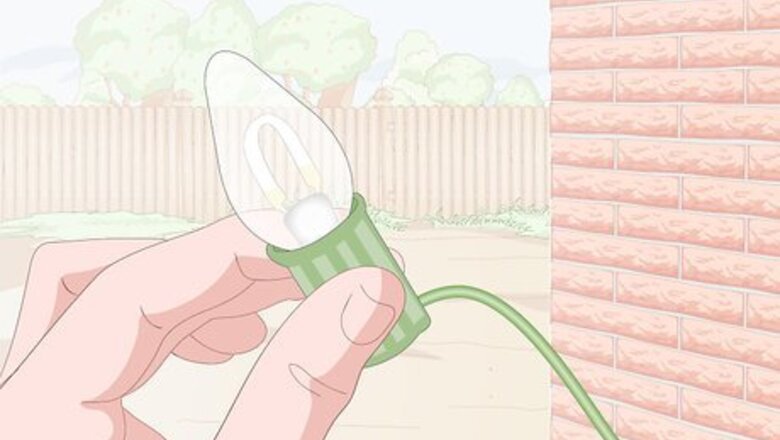
views
Using a Glue Gun
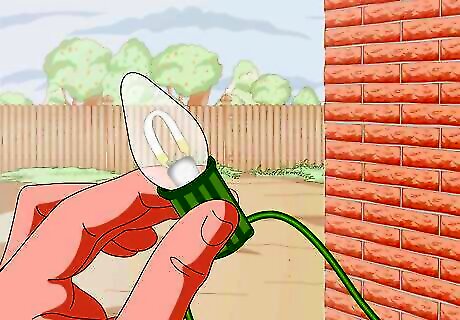
Choose big bulbs for an easier time hanging them on brick. Look for thick bulbs with big bases. The plastic base of each bulb is the important part since you need them to secure the light strand to the wall. A bigger base means sturdier bulbs that can handle more glue. Although tiny icicle lights look pretty, they are difficult to attach this way. To make the process a little easier, consider getting strands with detachable bulbs. That way, you can remove the bulbs before hanging the strands, ensuring nothing gets broken. If you’re looking to hang smaller bulbs, try using hooks or mounts for additional security.
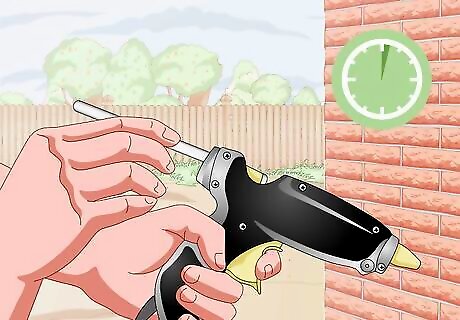
Put a glue stick in a glue gun and heat it for 2 minutes. Plug the glue gun into an extension cord in case you need to climb up to where you plan on hanging the lights. Then, get a clear glue stick from a craft store and insert it into the back of the glue gun. Turn the gun on and wait. Once it has had time to heat up, squeeze the trigger to see if hot, liquid glue comes out the tip. Be careful when handling the glue gun. It gets hot, so consider wearing a heat-resistant pair of work gloves. Also, move the glue gun away from flammable surfaces when you’re not using it.
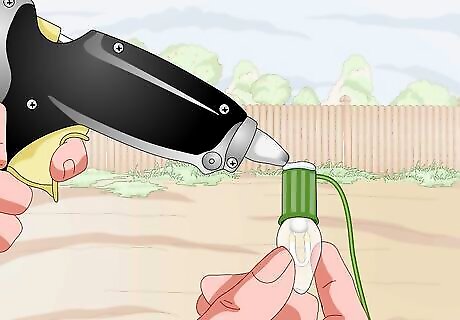
Spread a 1 in (2.5 cm)-thick strip of glue along the base of one bulb. Hold the glue gun’s nozzle close to the plastic casing covering the bulb socket. Gently press the trigger until a bead of hot glue pours out. Then, move the gun across the casing to spread a consistent bead of glue across it. Be careful to avoid getting glue on the bulb or the electrical wire inside the light strand. Spread the glue only on the plastic casing. If you prefer having the lights stick out from the wall instead, place a dot of glue under the base of each socket. The bulbs will be perpendicular to the wall once you finish hanging them.
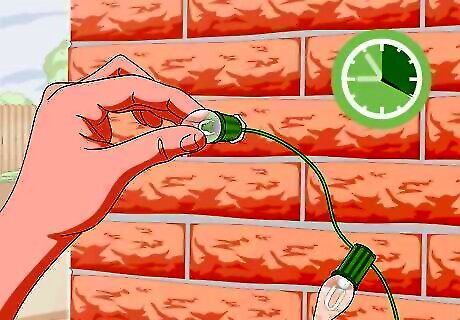
Press the socket to the brick for about 20 seconds. Press down firmly while the glue cools and settles. Then, remove your hand. Make sure the socket looks secure on the wall. If it looks loose or wobbles when you touch it, you may need to pull it off and add more glue. Try squirting some glue from the top edge of the socket. Let it seep down between the wall and socket, then test the bulb again after the glue has had a chance to cool. The glue will start to settle after a couple of seconds, but give it as much time as you can to ensure the bulb is secure. Wait for the glue to cool before turning on the bulbs.
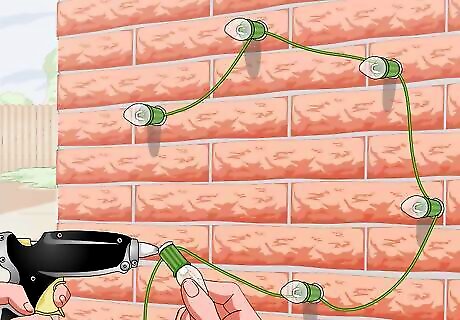
Add glue to the other bulb sockets to hang them. Repeat the process with each bulb socket one at a time. While you’re positioning the bulbs, keep the light strand relatively taught but with a small amount of slack. If the strand is difficult to move, you could end up pulling apart the strand’s casing or wiring. The line also can’t be too loose or else it will droop when it’s on the wall. The initial socket you glued should stay anchored throughout the hanging process. However, take care not to tug on the strand or else it may pop off.
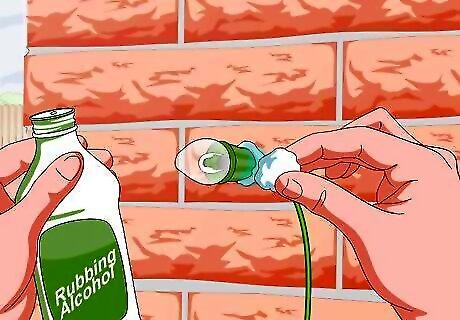
Soften old glue with rubbing alcohol to remove the lights. The bulb sockets are pretty easy to remove by wiggling them until they pop off the wall. If you need help loosening a bulb, dampen a cotton ball in rubbing alcohol and dab the glue with it. Pull the light off if you already placed it on the wall. Then, peel off the hardened glue while using more rubbing alcohol as needed. Rubbing alcohol is available online and at pharmacies. The old glue comes off in a single, congealed blob. If you need help lifting it, pry it up with a metal wall scraper, then start peeling the rest off. You can use rubbing alcohol to fix mistakes when hanging light strands. Wait for the glue and bulb sockets to cool before touching them.
Setting up Detachable Brick Clips
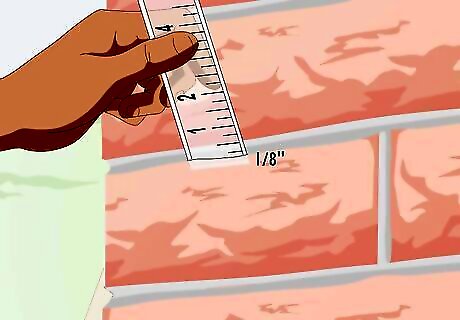
Check that the bricks stick out ⁄8 in (0.32 cm) from the wall. The bricks need to stick out from the mortar in order for the clips to adhere properly. Use a ruler or tape measure as needed to check. As long as the brick wall isn’t completely flat, you can find space for the clips.
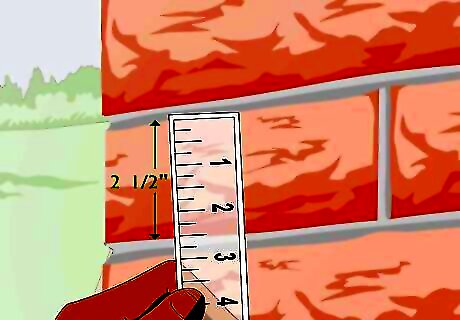
Measure the height of individual bricks to choose a clip size. The clips are designed to fit over individual bricks, but bricks can come in different sizes. A standard clip fits bricks up to 2 ⁄2 in (6.4 cm) in size. Queen clips fit bricks 2 ⁄4 in (7.0 cm) in size. Use the maximum size clips for any bricks bigger than that. If your wall doesn’t have space for clips, you will need to find a different hanging method. Hot glue or heavy-duty mounting tape are both good ways to put up lights without damaging the wall. Alternatively, look for accessible spots to fit clips. You may be able to tuck them between the wall and your home’s eaves, for instance. Then, use plastic wire ties to bind the light strands to them.
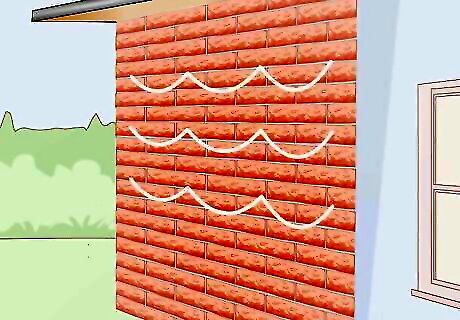
Estimate the length of space you plan on covering with lights. Pick a good spot to display the lights, such as along the top of a wall or around an opening in it. Then, use a ladder and a tape measure to determine the distance you plan on covering. This will give you an idea of what length of light strands you need, but it’s crucial for determining how many clips you need as well. The clips generally need to be positioned about 6 to 8 in (15 to 20 cm) apart in order for the light strands to adhere closely to the wall. For instance, if you’re hanging 3 ft (0.91 m) of lights, use about 6 clips. You may need some extras or decide to use less. If you don’t mind letting your lights droop a little bit, you can space the clips further apart. Letting the lights sag could become part of your home’s style of decoration.
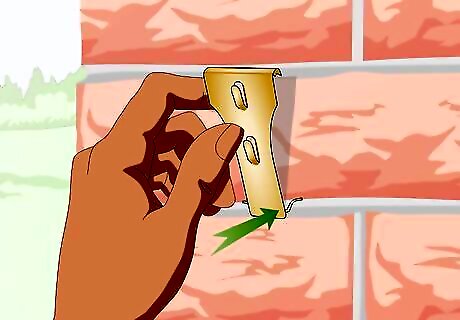
Push the spring end of the clip onto the bottom of the brick. Brick clips are basically metal brackets that fit over individual bricks. The bottom part of each clip has a U-shaped spring that sticks out slightly. Fit the clip on the wall by putting it over the brick. Then, push the spring up onto the bottom of the brick. The spring rests in the mortar between the bricks. It is meant to latch onto any size of brick as long as the clip is long enough to fit over the brick.
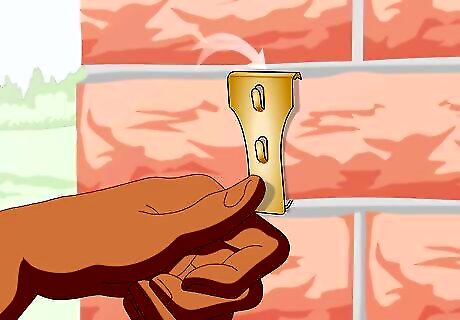
Press on the spring until the top of the clip hooks onto the brick. The top part of the clip has little teeth to hold it to the brick. This part fits in the gap where the mortar is. Once the clip locks in place, it will be flat against the wall. Touch it to see if it feels sturdy and difficult to move. You don’t need to use fasteners or anything else to bind the clip to the wall. It is meant to hang over the brick even through harsh winters.

Set the light strands in the clips to hang them. The clips have a pair of prongs on the front that will now be sticking out from the wall. All you have to do is slide the cord from your Christmas lights into the clips. Stretch the strands from one clip to the next to position them on the wall. Make sure you wedge the light strand firmly into the prongs so it can’t come loose at all. Step back and look at the lights to check how good they look over the brick wall. Before continuing, make sure the clips are spaced to your liking.
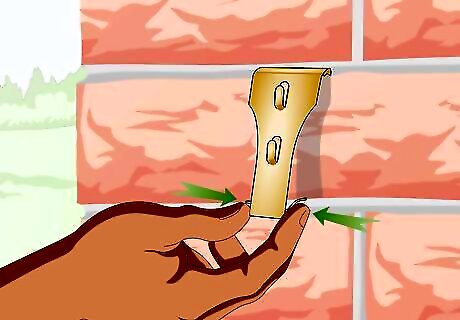
Remove the clips by pressing the metal spring at the bottom. When you’re ready to remove the clips, pull the light strands out first. Then, press down hard on the bottom of each clip. The pressure you use forces the top part of the clip forward. Once it is free from the wall, pull the clip down and off the wall. If you’re having a hard time removing a clip, try using a small screwdriver to press down on the spring. Brick clips are weatherproof, so you can leave them outside all year. However, if you wish to ensure they don’t corrode, take them inside once the weather warms up.
Installing Permanent Anchor Plugs
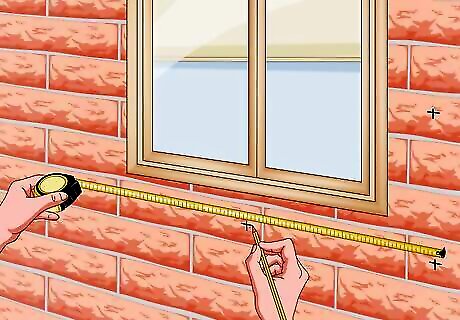
Measure and mark the spot where you plan on hanging the lights. Select a decorative spot for the lights, such as around a door or window. Then, with a ladder and tape measure, plot out where you plan on positioning the lights. You will need to make holes in the mortar to install anchors, so use chalk to mark the spots you plan on drilling. These spots should be no more than 1 ft (0.30 m) apart on average. Determining the distance you need to cover will help you select the proper strand length to complete the decoration.
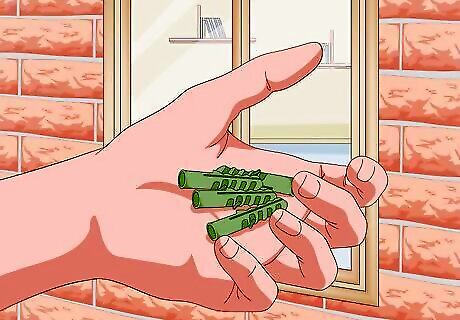
Get wall plugs to help anchor the lights to the walls. The plugs are plastic tubes that fit inside holes you drill in the mortar. Christmas lights aren’t very heavy, so the smallest plugs are all you need. They are colored yellow and sometimes marked as gauge 4. After you install the plugs, screwing hanging hooks into them causes them to open up and adhere to the wall. Plug anchors are available online or at most hardware stores. They may be sold as masonry anchors. There are bigger anchors available as well as metal ones for heavier weights. Avoid these, if possible, to limit the amount of damage to the wall.
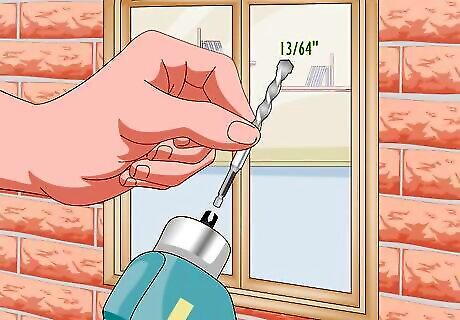
Install a ⁄64 in (0.52 cm) masonry drill bit into a power drill. Twist the old bit counterclockwise to remove it, then fit the new drill bit in its place. It has to be a masonry drill bit in order to successfully break through the mortar without burning out your drill. Keep in mind that there are different sizes of wall plugs you can use, but the smallest one is fine for stringing up Christmas lights. A ⁄64 in (0.52 cm) bit corresponds to the smallest type of brick wall plug. If you’re using a different size of plug, change out to a matching drill bit.
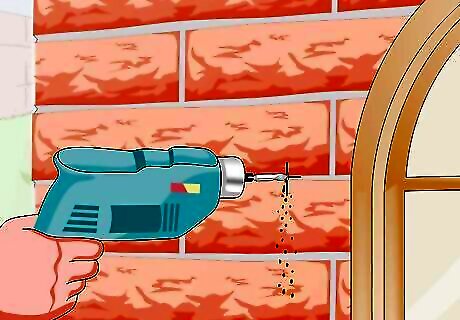
Drill holes into the spots you marked on the wall. Wear the proper safety equipment while drilling the holes. Get a good pair of safety goggles and a dust mask to protect yourself from flying shards of mortar. When you’re ready, climb up onto the ladder and drill the marked spots one by one. Hold the drill steady so the masonry bit passes straight through the mortar without hitting brick. Consider also wearing work gloves and long-sleeved clothing for additional protection. Keep in mind that drilling into a wall can damage it or lead to leaks. Drill carefully and, if you’re concerned about damaging the wall, use glue or brick clips instead.
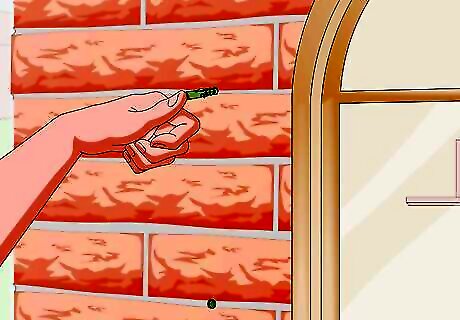
Push wall plugs into each of the holes you drilled. Pick up one of the yellow plugs. It will have an end similar to a regular screw. Push that end into the hole, twisting it by hand as needed to fit the plug deep into the wall. Make sure the open end of each plug is flush with the wall. You can find the plugs, as well as the cup hooks you need, online or at most hardware stores. If the plugs don’t go in easily, hold a chisel up to them. Tap the chisel handle with a hammer to push the plugs deeper into the wall. Since the plugs are plastic, they could break if you hit them too hard.
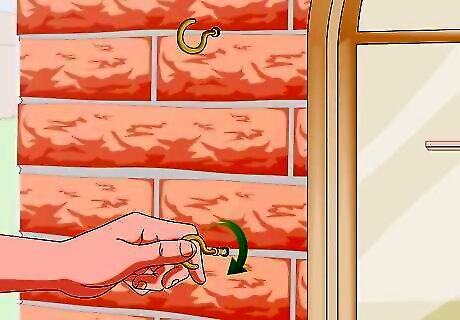
Screw in cup hooks by hand until they are tight in the plugs. Look for screw hooks about ⁄32 in (0.24 cm) in diameter. They need to be about the same length as the wall plugs you are using. To install a hook, push the screw end into the wall plug and turn it clockwise by hand. The hooks will give you a place to string up the lights. The screw hooks have to be a similar size and length to the plugs you used or else they won’t fit properly. Make sure they screw in all the way and don’t seem loose when you touch them.
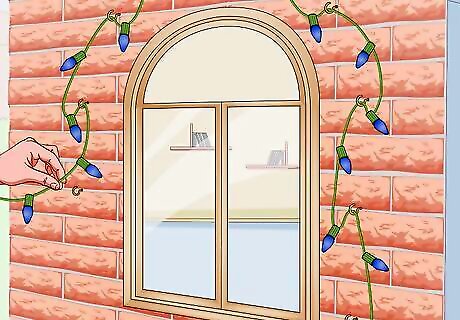
Hang and secure the lights to the hooks. Begin moving the light strands onto the open ends of the screw hooks. The strands may not be well-secured in some areas. To hold your Christmas lights in place, wrap plastic zip ties around them or use mounting tape. Then, take a step back and check to see if your home looks festive for the holidays. Pick ties that blend in well with the light strands. Black is usually a good choice since it doesn’t stand out, especially in the dark. Zip ties and tape need to be wrapped around the strand’s cord, not the bulbs. For safety, make sure all of the bulbs are clear of obstruction.

















Comments
0 comment